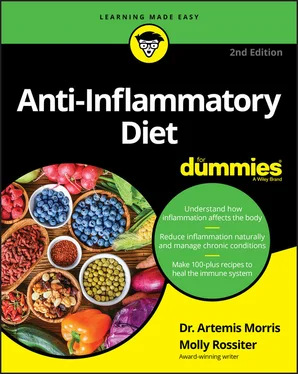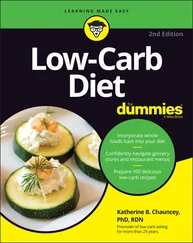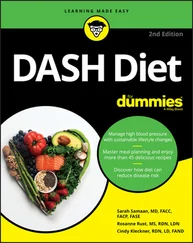1 ...6 7 8 10 11 12 ...18 When people with celiac disease eat gluten, it creates a reaction that damages the villi, the nutrient-absorbing projections on the lining of the small intestines. Because the body can’t absorb the nutrients, someone with celiac disease may become malnourished. Even the smallest amount of gluten can pose a threat to people with celiac disease.
Celiac disease can develop at any time, from infancy to adulthood. Although damage to the villi may heal — it takes three to six months to heal in children, two to three years for adults — people with celiac disease must continue to follow a gluten-free diet for the rest of their life.
Some of the symptoms of celiac disease are fatigue, bloating, constipation, weight loss, abdominal pain, gas, diarrhea, and weakness. It can progress to anemia, irritable bowel syndrome, and even early-onset osteoporosis.
Health problems that accompany celiac disease go well beyond the gastrointestinal tract. Damage to the bowels can lead to other autoimmune disorders (disorders that occur when the body’s immune system attacks healthy tissue). Some associated autoimmune disorders, according to the Celiac Disease Foundation (CDF), are
Addison’s disease
Alopecia areata
Chronic active hepatitis
Graves’ disease
Insulin-dependent type 1 diabetes mellitus
Liver diseases
Lupus
Raynaud’s syndrome
Rheumatoid arthritis
Sjögren’s syndrome
Scleroderma
Thyroid disease — Hashimoto’s thyroiditis
In addition, several other disorders have been associated with celiac disease:
Chronic fatigue syndrome
Down syndrome
Fibromyalgia
Williams syndrome
Nonceliac problems with gluten
Some people have sensitivities to gluten and gluten products without having celiac disease. Nonceliac gluten sensitivity may occur when a person is eating a diet with excessive gluten and gluten products or contaminated with toxins that cause leaky gut, increasing the risk that gluten protein fragments will get into the bloodstream.
Leaky gut syndrome, or increased permeability of the small intestines, is a defect in the barrier between the small intestines and the bloodstream. A little leak is normal, but when things get too leaky, it allows harmful proteins to go directly into the bloodstream without being broken down as they should. The body then looks at those escaped proteins as foreign invaders.
The same autoimmune disorders that can be traced to celiac disease have links to leaky gut syndrome. Some more minor ailments caused by leaky gut syndrome include irritability, sluggishness, tiredness, achiness, and a decline in mental acuteness.
Shopping for a gluten-free diet has become easier thanks to increased awareness of gluten sensitivities, but it’s still a difficult task. Many grocery stores stock a gluten-free section, but that area is seldom more than a few shelves.
At the top of the list of foods to avoid are those made with wheat — which encompasses quite a lengthy list. Anything that contains flour generally contains wheat flour, even if it’s not a whole-wheat item. Wheat can even be lurking in unexpected places — it’s used as a thickening agent and is in a lot of condensed soups, gravy mixes, and sauces as well as in processed meats.
People who have gluten sensitivity or celiac disease also need to avoid foods and products made with barley and rye, which are relatives of wheat. Oats are naturally gluten-free, but they’re often farmed on land on a rotation with wheat and are processed by the same machines, so look for a brand labeled “gluten-free” — Red Mill is a good brand. For more information on celiac disease and avoiding gluten, check out the latest edition of Living Gluten-Free For Dummies by Danna Korn (John Wiley & Sons, Inc.).
Getting Tested for Allergies and Sensitivities
Although everyone’s allergy or sensitivity is different, some foods cause problems more often than others. Some of the most common food allergens are eggs, milk, soy and soy products, wheat, fish, shellfish, tree nuts, and peanuts. People with food allergies should also be cautious about eating other foods from the same evolutionary family. For example, people with wheat allergies need to be careful with other grains.
Some common food sensitivities are cow’s milk, wheat and gluten, soy and soy products, peanuts, corn, eggs, chicken, pork, corned beef, shellfish, oranges and other citrus fruits, strawberries, and tomatoes and other nightshade vegetables.
Figuring out what you’re allergic or sensitive to, and what kind of reaction you have, is an important step in regaining and maintaining health and quality of life. When talking about food allergies and sensitivities, people are most often referring to either immunoglobulin E (IgE) or immunoglobulin G (IgG) allergies/sensitivities. The differences between the two lie in reaction time and severity:
IgE allergy: An IgE allergy triggers the IgE antibody, which causes an immediate response when the offending substance enters the body. The people who are so severely allergic to peanuts that exposure even to peanut dust can be fatal have an IgE allergy, or classic allergy . Reactions include swelling, hives, difficulty breathing, and even anaphylactic shock.
IgG allergy/sensitivity: With IgG allergies/sensitivities, the IgG antibody response is typically much more delayed and can include headaches, nausea, fatigue, and/or other digestive symptoms and even seizures. These allergies/sensitivities can also contribute to long-term health issues such as irritable bowel syndrome, diabetes, rheumatoid arthritis, and heart disease.
Three basic types of tests, done by a health care professional, can determine whether you have a food allergy:
Blood test: The radioallergosorbent test (RAST) is a blood test that’s generally conducted after a person has a recurring reaction to a particular food or foods. Signs of a possible allergic reaction to food are similar to other allergy signs: red or itchy eyes, hives, dermatitis (skin inflammation), coughing or sneezing, or stomach discomfort and diarrhea. A positive test doesn’t determine how severe a reaction to a certain food may be, only that you may have a reaction of some kind.
Skin test: A skin test, in which the skin is pricked, punctured, or scratched after coming in contact with a potential allergen, may show preliminary signs of allergy.
Food elimination test: The elimination test is just as it sounds — a test for allergies conducted by first eliminating all possible allergens from your diet. This test takes some time, because you have to make sure you’ve adjusted to a diet without the suspect foods. You give the allergen-free diet at least a few weeks so your body gets used to the missing allergens.To determine which foods may be triggers, they’re reintroduced one by one with three to four days between each reintroduction. After you start reintroducing the foods, you keep a log or journal of what you’ve eaten and what, if any, reactions you experienced. After a reaction occurs, you again eliminate that food to see whether the situation reverses — if you broke out in a rash, for example, you make sure the rash goes away.Your integrative medicine doctor can also test you for food sensitivities using tests that measure IgG, protein levels in foods, or other inflammatory markers including zonulin. All these tests have different levels of accuracy, so be sure to check with you doctor first. It may be better to start with the elimination diet to get a first-hand experience of how food makes you feel. Be sure to replace any vitamins and other nutrients you’d be getting from a suspect food with something else, either a vitamin supplement or another food source, during the elimination period. Common food nutrient deficiencies with food allergies and leaky gut syndrome include Vitamin B12, zinc, and iron.
Читать дальше












